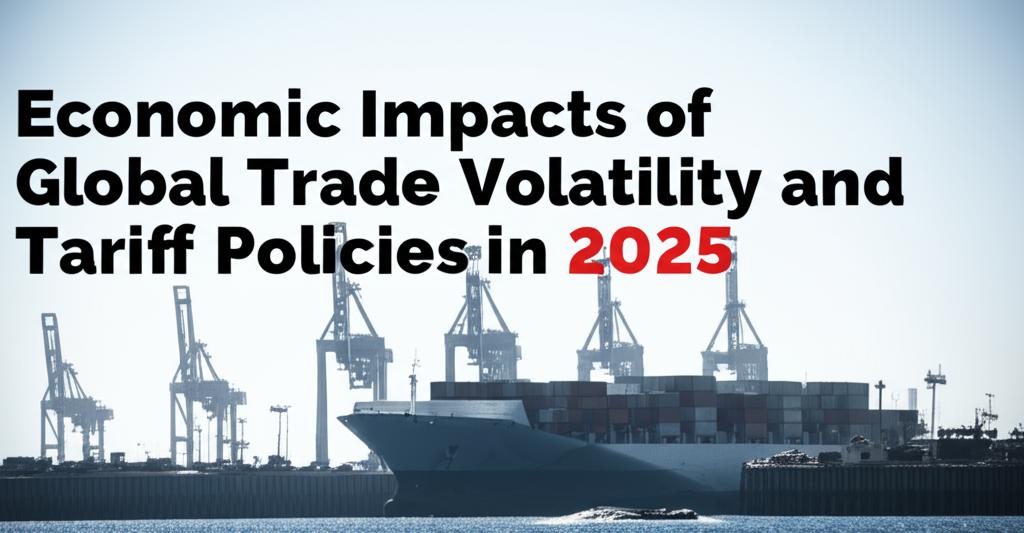The global economy in 2025 is navigating a period of heightened uncertainty, with trade volatility and new tariff policies significantly impacting growth prospects and market stability.
Key Economic Impacts and Trends:- Slower Global Growth: Multiple institutions forecast a slowdown in global growth for 2025. The IMF projects a decrease to 2.8%, down from 3.3% in 2024, largely attributing this to renewed trade tensions and policy uncertainty. UNCTAD also signals a global growth slowdown to 2.3% in 2025, a rate often associated with a global recessionary phase. This deceleration is a notable drop from pre-pandemic growth rates.
- Increased Policy Uncertainty: Economic policy uncertainty has reached its highest levels this century. This unpredictability is a major driver of the economic outlook, leading to cautious business sentiment and investment delays. The "fear index" (VIX) also signals rising unease among investors.
- Tariff Policies and Trade Wars: Sweeping U.S. tariff increases announced in early 2025, some reaching levels not seen since the early 20th century or even the Great Depression era, are a primary concern. These include broad tariffs on imports and specific, higher tariffs on goods from countries like China (with some rates reportedly as high as 125% or 145% after clarifications). These actions have triggered retaliatory measures from trading partners, escalating trade tensions.
The U.S. average effective tariff rate is estimated to be significantly higher, potentially around 22.5% to 27%, its highest in over a century.
These tariffs are expected to increase consumer prices in the U.S. The Budget Lab at Yale estimates a short-run price level increase of 2.3% to 2.9%, translating to an average per-household loss of purchasing power of around $4,700. Long-run U.S. GDP could be persistently 0.6% smaller.
Specific sectors like apparel and textiles are predicted to see substantial price increases for consumers.
- Impact on Trade Volumes: Global merchandise trade is expected to decline. The WTO forecasts a 0.2% dip in 2025, with a more significant 12.6% drop in North American exports. In a worst-case scenario of escalating tensions, this decline could reach 1.5%. Global trade growth is projected by some to slow to 1.7% in 2025. An uptick in trade in late 2024 and early 2025 was partly attributed to front-loading orders ahead of newly announced tariffs.
- Regional Impacts:
United States: Expected to see the sharpest slowdown among major developed economies, with growth potentially between 0% and 0.5%. Tariffs are projected to reduce U.S. GDP growth by around 0.9 percentage points in 2025. There's an increased risk of a technical recession (a quarter or two of negative growth).
Eurozone: Growth is forecast to be modest, around 0.8% to 1.0%. Germany is near recession, while France and Italy show limited recovery. The direct impact of U.S. tariffs on EU growth might be around 0.2 to 0.4 percentage points. However, Europe might benefit from lower goods prices as China diverts exports.
China: Facing a slowdown with growth expected to decelerate to around 4.5%, impacted by property market fragility, demographics, and U.S. tariffs. China is likely to use fiscal and monetary policy to offset some tariff impacts.
United Kingdom: Expected to see positive but constrained growth (0.5%-1%), with less policy leeway than Europe due to fiscal constraints and sticky inflation.
Developing Economies: Particularly vulnerable to trade slowdowns, policy uncertainty, and capital outflows. Least-developed countries are expected to be hit hardest. However, increasing South-South trade and regional economic integration present opportunities.
* India: Remains a rapidly expanding economy (around 6-7%), supported by strong domestic demand.
- Inflation and Monetary Policy: While global inflation is generally expected to decline, it may do so at a slower pace than previously anticipated. New tariffs are likely to push inflation up, particularly in the U.S., potentially delaying interest rate cuts by the Federal Reserve.
- Supply Chains and Investment: Heightened uncertainty and tariffs are disrupting global supply chains, causing businesses to pause investments, reduce spending, and reassess strategies. This can lead to a less efficient and more opaque global trade system.
- Financial Markets: Increased uncertainty and tightening financial conditions are weighing on economic activity. Financial markets may face more severe tests, and capital outflows could particularly impact emerging markets.
- Fiscal Implications: While tariffs are projected to raise significant revenue for the U.S. government (estimates vary, e.g., $5.2 trillion over 10 years conventionally scored by one model, $2.4 trillion over 2026-35 by another), the negative dynamic effects on GDP could offset some of these gains.
- Long-Term Risks: Sustained high tariffs and trade policy uncertainty can hinder both short-term and long-term growth prospects, reduce competition and innovation, and increase rent-seeking behavior. Scaling back international cooperation could jeopardize progress towards a more resilient global economy.
The current global economic situation is described as a "critical juncture." Analysts stress the need for careful attention to policy shocks and cross-border dynamics. There are calls for countries to work constructively towards a stable and predictable trade environment, facilitate international cooperation, and address domestic imbalances to foster economic stability. Easing current trade policy stances and forging new trade agreements could immediately improve growth prospects.
In conclusion, 2025 is characterized by significant headwinds from trade volatility and protectionist tariff policies. These factors are dampening global economic growth, increasing inflation risks in some regions, and creating substantial uncertainty for businesses, investors, and consumers worldwide. The path forward will largely depend on how trade tensions evolve and whether international cooperation can be strengthened.

